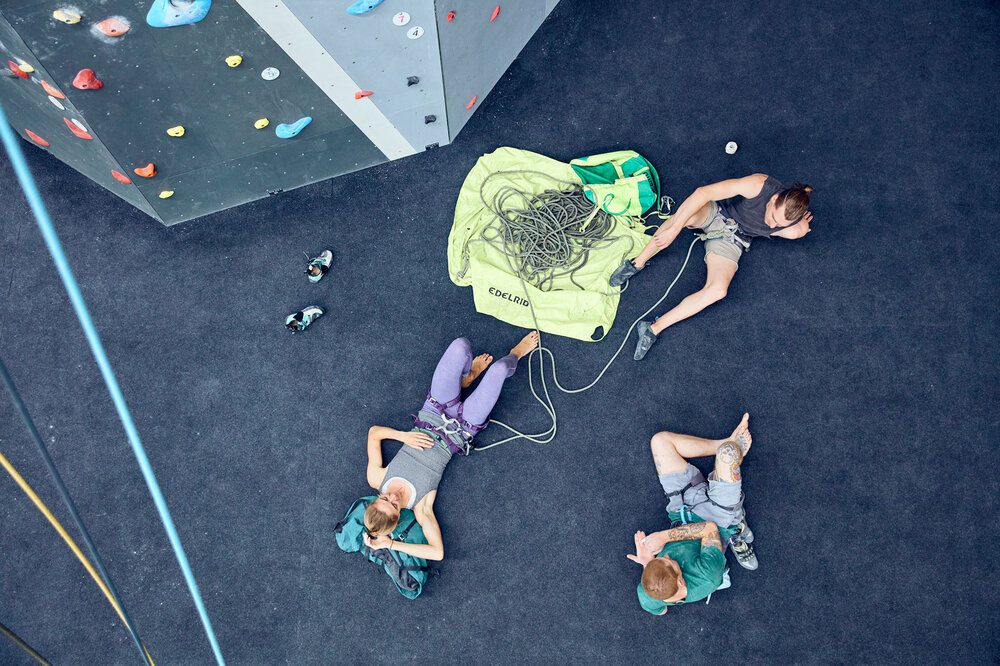
Whether you’re looking for outdoor or indoor rock climbing gear for beginners, several outlets provide them for rent - but at some point, you will want to get your own.
The crew at Climb Fit have put together some top picks for indoor and outdoor climbing gear designed to get you started with your very own kit with some cost-effective recommendations and pro tips as well. So, let’s dive in shall we ?
Climbing Shoes
With climbing shoes, you need ones that not only fit but are also comfortable on your feet and do not fall apart after a couple of years. At a beginner level, you don’t really need expensive shoes. Just make sure they’re durable. And if they come with velcro straps, that’s even better as they make it easy to put on and take off.
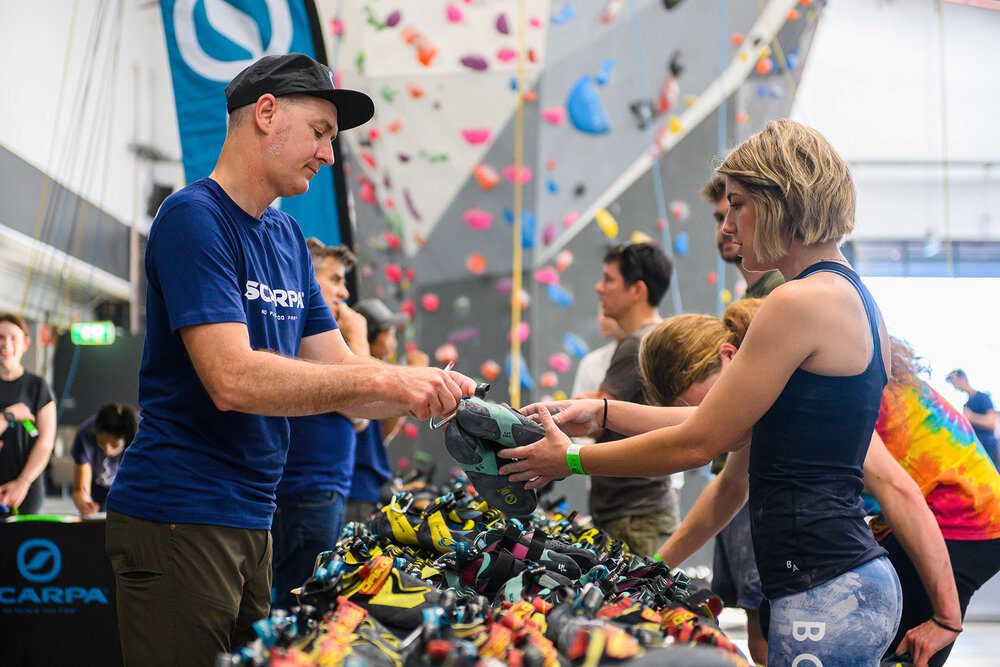
Scarpa demo night at Climb fit Kirrawee
Climb Fit regularly runs demo nights with all the top brands. Trying on and test driving your climbing shoes is absolutely vital when investing in a pair. We can’t tell you how often we hear of people buying shoes online only to find out very quickly they don’t fit properly!.
Climbing shoes are precisely fitted and have many different dynamic options, such as toe configurations, rubber compounds, soft vs stiff flex and many more factors that require consideration before you take the plunge.
We regularly post our upcoming demo nights on our events page and on Facebook. Keep your eyes peeled for the next one!
Harness
Just like most of the other climbing gear for newbies, if you are just getting into the sport, any harness from any of the popular brands should do just fine.
The fit of the harness is the most important thing. There are specific male and female harnesses to fit the different body shapes. Make sure it sits comfortably above your hips and doesn’t dip down at the front where you attach the rope - as this is a common error beginners make.
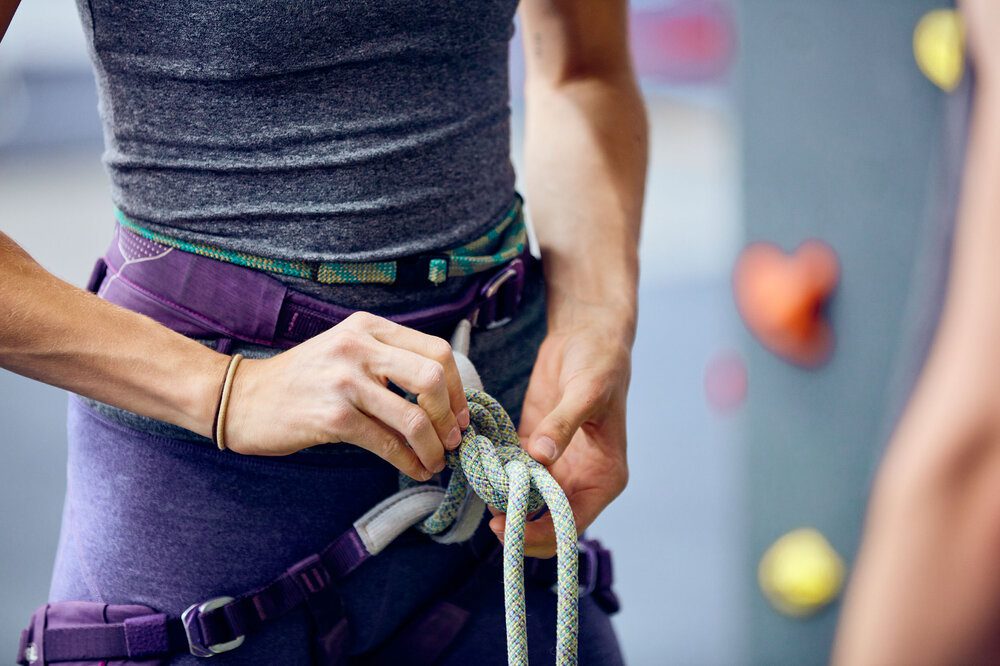
Some additional tips for harness choice
Look for padding and comfort. Ideally, you should sit in the harness on a rope to get an idea of how it fits when weighed.
A more expensive harness is not always the best to start with as these can be light but not very comfortable
Look to see it has enough gear loops (3-5) for those future trips outside (and make sure the colour matches your outfit).
Always read the manufacturer’s instructions before use.
Climb Fit Recommends the BLACK DIAMOND MOMENTUM harness for $112AUD
**If possible, come visit us at the gym as we want to ensure you are fitted properly. You can visit the PRO SHOP at Climbfit Kirrawee or Climb Fit St Leonards to view the range and, have a custom fit.
Liquid Chalk
The new norm for indoor climbing gyms worldwide is Liquid Chalk. It goes on as a clean and tidy liquid, and before your very eyes magically dries up in a uniform layer of the same chalk you know and love!
Liquid chalk has the benefits of lasting longer between applications as well as minimising airborne chalk dust. Some liquid chalks come in neat little packages that you can clip onto your harness, and others come in more substantial bottles that you can be a bit more liberal with.
However, just like your usual loose chalk - chalk isn’t just chalk. Different brands not only have their own chalk formulas with their own twists, but the way they turn it into a liquidy magic potion can be slightly different also.
As a general rule of thumb - whatever loose chalk you usually like to use, that brand’s liquid option is likely your weapon of choice.
We are loving the Eitt Liquid chalk in 200mL or 50mL from local brand, Perpendicular. LIMITED STOCK AVAILABLE in our pro shop.
If you're feeling a little crafty, how about you try and make your own liquid chalk?
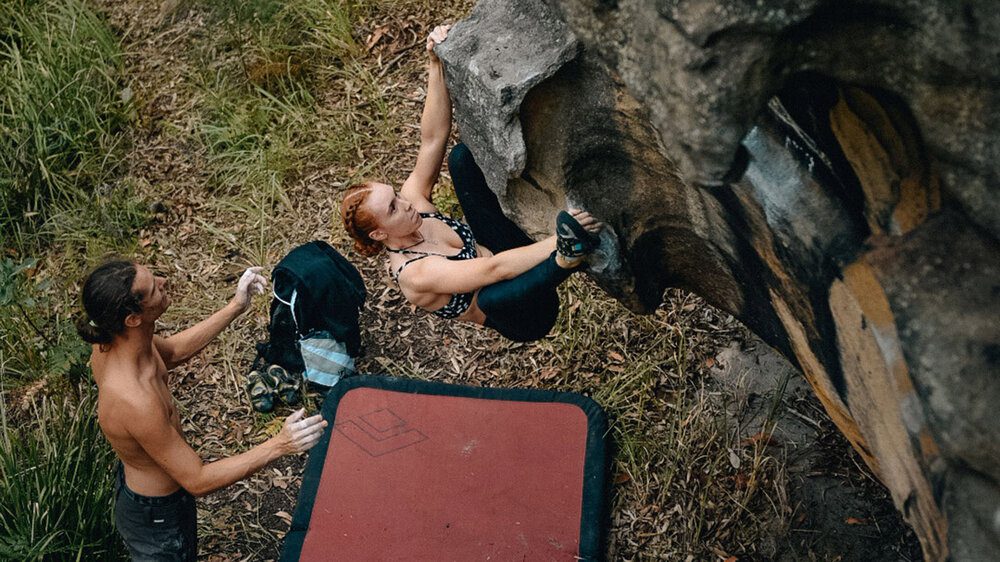
A chalk bag is essential to have around, especially for a beginner. Any simple chalk bag should work just fine with the added bonus of picking a design that speaks your language when shopping for new kit.
Just make sure that the bag closes to prevent the chalk from spilling, and that it fits the size of your hands thoroughly. It should also come with loops that can be attached via a small clip to your harness or a strap that you wear around your waist. And if your bag has a zipper pocket to hold a brush, finger tape or coffee money, that’s even better!
Did you know that our very own Paige Strudwick makes her own hand made chalk bags? Ranging from small to a larger bucket style that is perfect for outdoor bouldering sessions.
Chalk
For a beginner, you shouldn’t forget your chalk - after all, that is the reason you bought a chalk bag. Using chalk also protects the palm of your hands and your fingers while giving them enough time to get used to the rigorous feel that climbing surfaces come with.
Most pros will tell you not to focus on the brand of chalk as a beginner, as you will hardly notice any difference unless you want to try out the most unyielding climbs in your first attempt (not advisable).
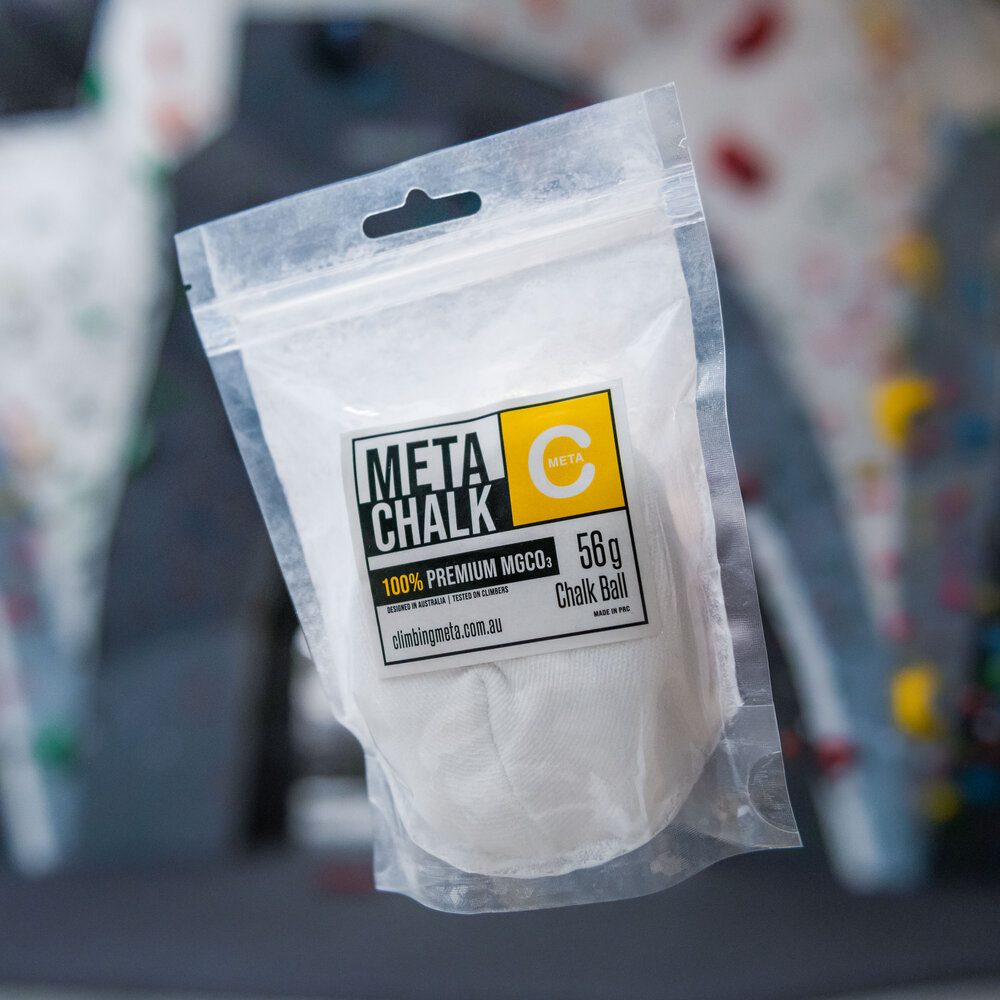

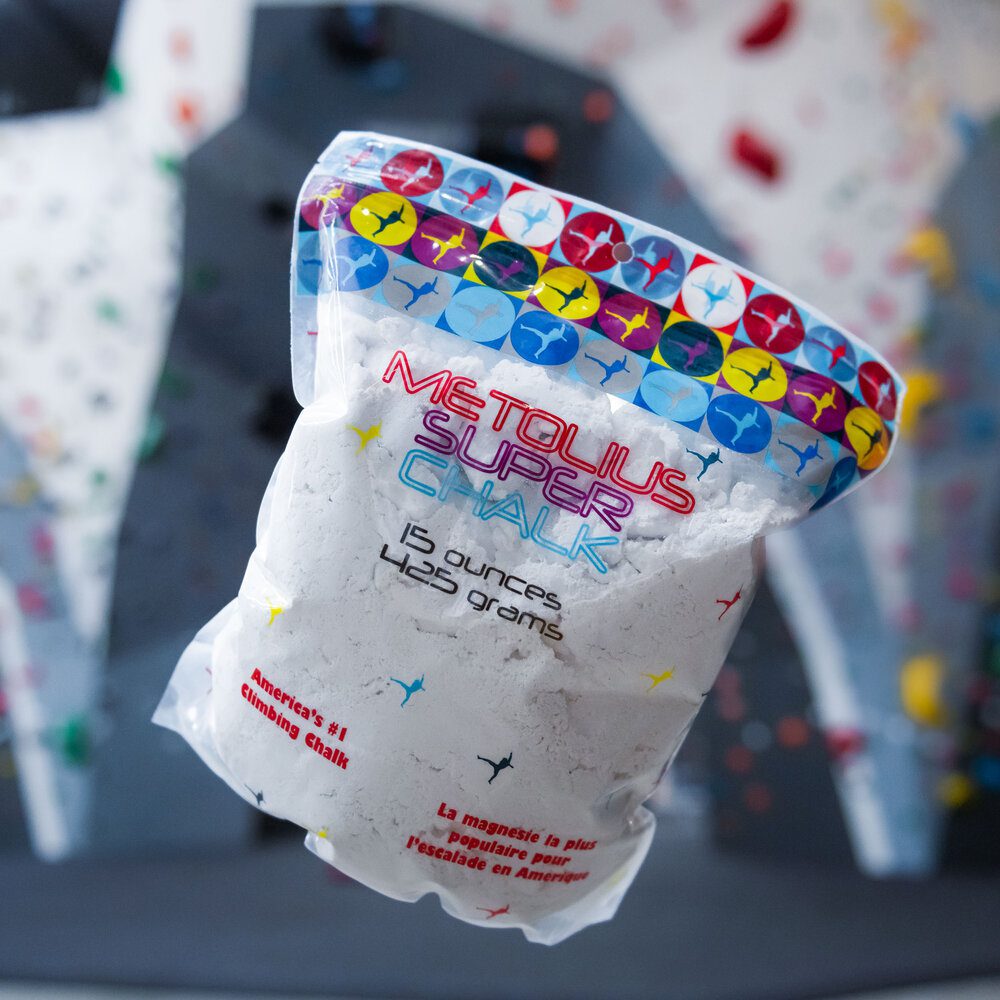

Climbing chalk is a little similar to the one weightlifters, and gymnasts use. Its powdery white form (made of magnesium carbonate) is specially formulated to keep the hands and fingers dry. To add more protection to your hands and fingers, you can also get a finger tape.
If you want to dive into the world of chalk tech, check out this article by Adrian Mascenon covering the top brand picks and how they differ.
**At present indoor climbing gyms around Australia are using liquid chalk or chalk balls in a bag only, so for now, please keep your loose chalk for your outdoor sessions at the crag.
Belay Device
When you think ‘belay device’ you should imagine the whole set-up. A locking carabiner is an integral part of this package, so look for a carabiner that will not spin on your harness because this can make the belay device hard to use.
Look for a simple design that lets the rope glide smoothly. Some devices have teeth to give you extra friction, these are great if your climbing partner is on the heavier side.
Make sure the device you choose fits the diameter of your rope and that the holes are not too small, as this makes feeding out and taking in slack too slow.
Here is a great introductory video from our friends at the Australian School of Mountaineering on how to set up an ATC belay device.
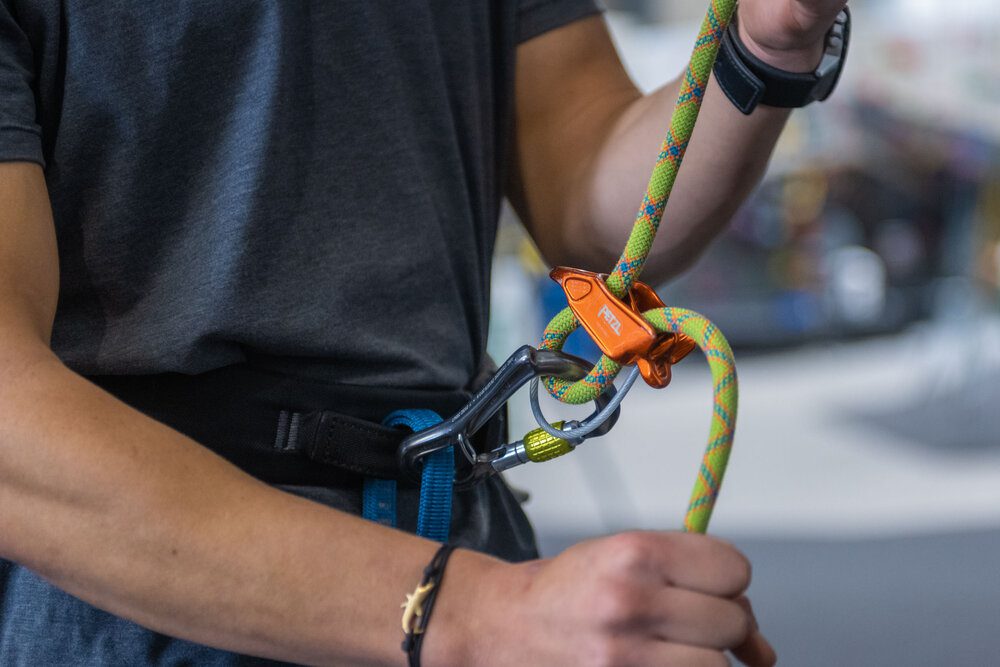
Climbing Rope
Okay, let’s set things straight - just because it’s expensive DOES NOT mean it’s going to be stronger or safer. A lot of costly ropes are very thin and light but not hard-wearing.
There are 2 main types of ropes, static and dynamic. If you are getting a rope for all types of climbing, you want a dynamic rope. You CAN NOT lead with a static rope, as there is little to no stretch available to absorb the shock of a fall.
The diameter and length of a rope are essential.
9.8-10.2mm is an excellent diameter to start as it’s durable but still handles well. Depending on where you intend on climbing, you also need to consider how long your rope should be.
60-70m should be fine for most applications
Having your own climbing rope is vital for safety reasons. Borrowing old, overused ropes will be putting your personal safety at risk.
Protect your rope so it can protect you. Be sure not to drag it over sharp edges or expose it to your dog who will see your prized possession as a chew toy - Consider it as one of your most essential investments.
Climbing Rope Bag
It can be pretty challenging to get your rope organised when you are a beginner. This is why it is a good idea to have a rope bag which should come with enough space for your rope.
If you can find a type that opens and spreads out enough for easy retrieval and storage of your rope, then that’s the one you should get. You don’t want to waste time getting your rope into the bag. That will only discourage you from using it.
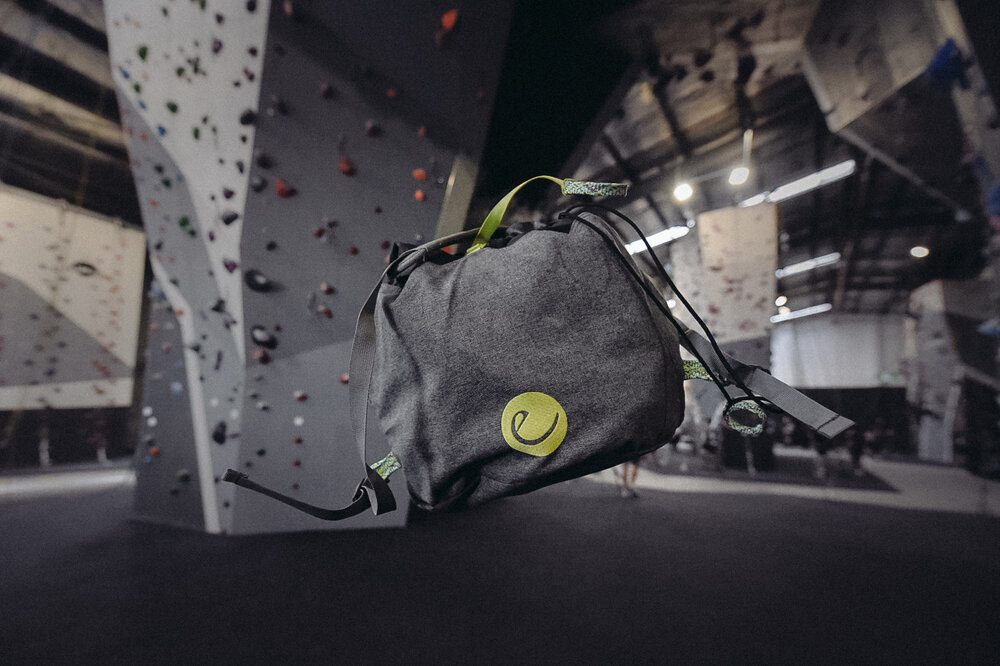
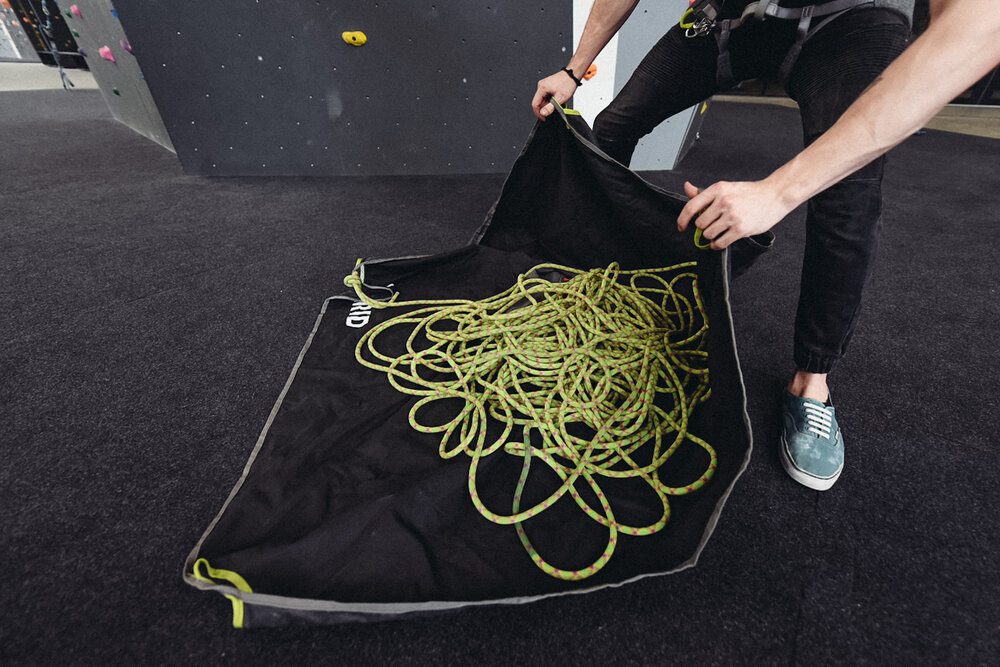
Also, look for a rope bag that comes with a tarp that’s large enough to protect the rope from the dirt and debris on the ground while you’re using it. You can check out our review on the EDELRID Caddy II rope bag here.
Quickdraws
Quickdraws should be part of any climbing gear list for beginners heading outdoors, as quickdraws play an essential role in protecting you from a fall.
When climbing up, you will clip the quickdraws onto the bolts in the rock, while the other end of the quickdraw will hold your rope. For every rock climbing beginner, it is recommended to have a minimum of 8-12 quickdraws.
A short quickdraw doesn’t really mean you will fall less, so a standard 12-17cm sling will work fine. The bottom carabiner doesn’t want to be too small as this will make it hard to clip the rope in. The sling part of the quickdraw doesn’t want to be too thin, it may make it lighter but hard to hold, you will do a lot of this when you get started leading - trust us!
The crew at the Australian School of Mountaineering have some great videos on how to clip your quickdraws on our YouTube channel.
Locking Carabiners
Locking carabiners are very important when you need to ensure that the biner does not come undone. You cannot (and should not) attempt any belaying without using a locking carabiner.
Locking carabiners are available in several shapes and sizes, with some pretty outlandish mechanisms for locking; however, you don’t need anything complicated at this point.
All you should do is find a reputable brand that is a standard screwgate, operates smoothly, and is not too small. There is also the option of special belay biners that work better for belaying. They usually have a special ‘captive’ section at the bottom that stops it from spinning and cross-loading on the belay loop of your harness.
Slings are usually used in conjunction with the locking carabiners when working on an anchor at the top of a climbing route. They can be attached to the harness and directly clipped into a bolt or chains.
The slings will make it possible for you to remove your quickdraws from the anchor. This is very important when threading your rope through the ring to rappel down a route.
An 80cm sling is a good starting point. Your sling can measure about 80cm. You don’t want it to be too long as this will make you sit too far away when you are rethreading your anchor.
A Bouldering Pad
If you’re a devout pebble wrestler, nurturing a strong passion for bouldering, then you will need a crash pad or bouldering pad. A crash pad is all too important as it will be your primary source of protection. And please - don’t opt for a sleeping mattress, it doesn’t have the security to support your fall - plus you’ll also look…. well, silly.
For a rookie rock climber, this is not necessarily one of the first things to own compared to the other things we have already mentioned. We all know it’s easy to borrow or share a pad, but having your own crash pad will ensure that you get some extra protection in the possible event of a fall. The more, the merrier!
If you want some great tips on bouldering outdoors, check out this video with the Grandmaster himself.
